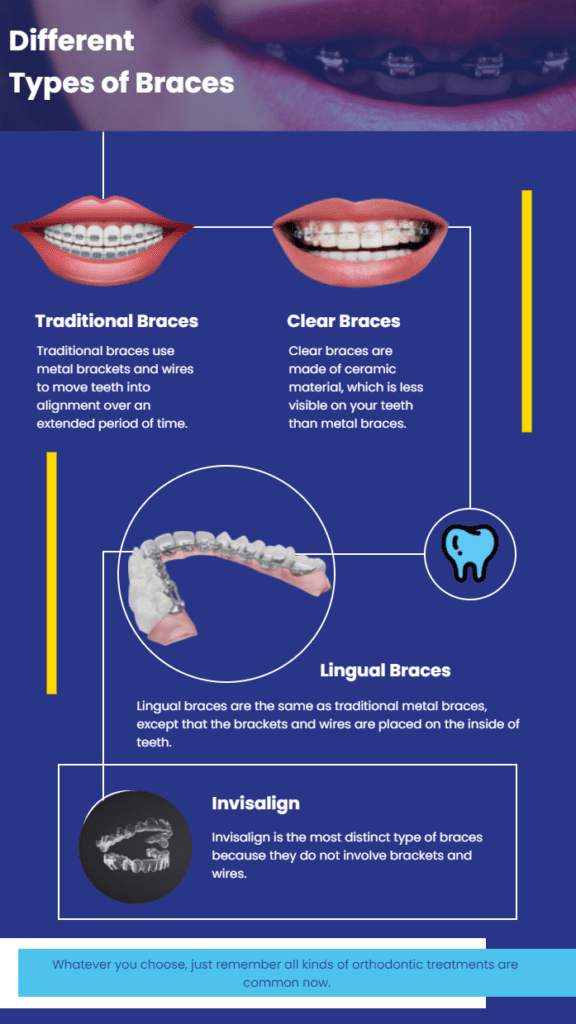Discovering the Right Cumming Orthodontist for Your Braces and Aligners Requirements
Discovering the Right Cumming Orthodontist for Your Braces and Aligners Requirements
Blog Article
Comprehensive Overview to Orthodontics Treatments for Fixing Oral Imbalances
Comprehending the ins and outs of each treatment, including their systems, benefits, and prospective drawbacks, is important in making notified decisions about one's orthodontic treatment. As we browse via the thorough overview to orthodontic procedures for correcting oral imbalances, the complex details of each method will unravel, dropping light on the path toward a harmonious and useful dental placement.
Orthodontic Procedures Review

Along with typical braces and clear aligners, orthodontists might also suggest various other treatments like headgear, palatal expanders, or retainers to address certain alignment problems (aligners). These treatments are tailored to every individual's unique requirements and might involve a combination of therapies to attain the desired outcomes. Normal adjustments and tracking are critical parts of orthodontic treatment to make sure progression is on track and to make any type of needed alterations along the road. By going through orthodontic treatments, people can not only achieve a straighter smile however additionally boost their overall oral health and wellness and feature.
Conventional Braces: How They Work
When thinking about orthodontic treatments for oral misalignments, traditional dental braces stand apart as a time-tested approach for remedying teeth positioning. Standard braces contain brackets, cords, and bands that work with each other to apply continuous pressure on the teeth, gradually relocating them into the preferred alignment. The braces are connected to the teeth utilizing a special adhesive, and the cables are threaded through the braces. By adjusting the tension of the cords, orthodontists can control the instructions and force related to each tooth, leading them into correct alignment gradually.
One secret facet of how conventional dental braces job is the procedure of bone renovation. As pressure is put on the teeth via the dental braces, the bone surrounding the teeth is reshaped to support the new tooth settings. This makeover is important for the long-lasting security of the remedied placement. Patients will need regular modifications at the orthodontist's office to make sure the dental braces remain to use the proper stress for reliable teeth activity.
Unnoticeable Aligners: Cons and pros
Unnoticeable aligners provide a discreet and convenient choice to typical dental braces for remedying dental misalignments. These clear, custom-made trays are basically unseen when put on, making them an attractive choice for individuals looking for a much more visually pleasing orthodontic treatment. Among the main advantages of invisible aligners is their removability, permitting for much easier maintenance of dental hygiene contrasted to traditional dental braces. People can affordable dental office get rid of the aligners prior to eating or cleaning their teeth, reducing the threat of food obtaining stuck in the home appliance and simplifying the cleansing process.

Surgical Orthodontic Options
Surgical interventions in orthodontics present practical choices for attending to complicated oral imbalances that may not be efficiently solved with standard orthodontic treatments. While conventional braces and unnoticeable aligners can correct many orthodontic issues, particular instances need surgical intervention to achieve optimum outcomes. Surgical orthodontic choices are usually recommended for severe malocclusions, substantial jaw disparities, and situations where the underlying bone structure requires adjustment to accomplish appropriate alignment.
One usual medical orthodontic procedure is orthognathic surgery, which entails repositioning the jaws to correct useful problems such as difficulty eating or speaking. This surgery is usually done in collaboration with an orthodontist that assists align the teeth prior to and after the procedure. Surgical orthodontics might also entail procedures to subject impacted teeth, get rid of excess gum cells, or reshape the jawbone to develop a much more unified facial account.
Before taking into consideration surgical orthodontic alternatives, clients undertake an extensive analysis to identify the need and potential advantages of such interventions. cumming braces. While surgery might appear complicated, it can significantly enhance both the feature and visual appeals of the smile in situations where standard orthodontic treatments fall short
Retainers and Post-Treatment Treatment

Failure to abide with post-treatment care instructions can result in regression, where the teeth progressively relocate back in the direction of their initial settings. Constant retainer wear, good oral health, and normal oral examinations are vital for preserving the results achieved via orthodontic surgical procedure and making certain the long-lasting stability of the fixed oral placement.
Final Thought
In verdict, orthodontic procedures Full Article use various alternatives for fixing oral misalignments. Surgical orthodontic choices are available for a lot more extreme misalignments. On the whole, orthodontic procedures can successfully improve dental wellness and aesthetic look.
As we browse through the detailed guide to orthodontic procedures for remedying dental misalignments, the detailed details of each technique will certainly unfold, dropping light on the course towards a harmonious and practical dental positioning. - invisalign
One of the most usual orthodontic therapies is the use of braces, which consist Read Full Article of steel braces and cords that apply gentle pressure to slowly change teeth right into the desired setting.When considering orthodontic therapies for oral imbalances, traditional braces stand out as a time-tested technique for remedying teeth placing. In addition, invisible aligners may not be suitable for complicated orthodontic problems that need more considerable teeth motion, as they are commonly advised for light to modest instances. Retainers are custom-made orthodontic devices designed to hold teeth in their fixed positions after the completion of orthodontic treatment.
Report this page